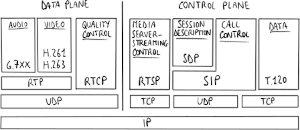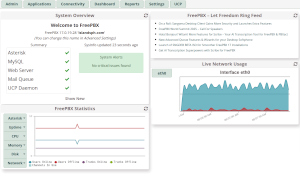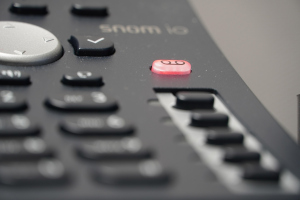Consulting: VoIP Design
 I have been designing and building Voice over IP (VoIP) telephony solutions since 2000. At that time I built the IMA call center in the Philippines catering to customers in the USA. The office system was based on Windows NT and TeleVantage (Artisoft) software using Dialogic hardware. The US phone service was provided in Sunnyvale, California and linked first through a Frame Relay circuit to Manila and then across town to our offices through a wireless E1 connection. It worked well and we were able to provide 800 service in the United States seamlessly connecting to our Philippine call center.
I have been designing and building Voice over IP (VoIP) telephony solutions since 2000. At that time I built the IMA call center in the Philippines catering to customers in the USA. The office system was based on Windows NT and TeleVantage (Artisoft) software using Dialogic hardware. The US phone service was provided in Sunnyvale, California and linked first through a Frame Relay circuit to Manila and then across town to our offices through a wireless E1 connection. It worked well and we were able to provide 800 service in the United States seamlessly connecting to our Philippine call center.
MONIC VoIP Solution
When we built the new MONIC domain registrar, I designed and deployed an Asterisk based VoIP solution. The local IPPABX connected to Cisco IP phones (SCCP) and to the local telephone company through Cisco/Linksys SPA 3102 Analogue Telephone Adaptors (ATAs). Integrating Cisco SCCP support into Asterisk was initially a bit of a challenge but turned out well in the end. The IPPABX integrated integrated a local Customer Resource Management (CRM) system.
Philippines Cost Constrained Solutions
 In 2024 I started a different type of VoIP project for our Philippines network. The design goals were different this time. I wanted to see if we could build an IPPABX node based on inexpensive and easy to obtain hardware. Previous projects did not focus on cost, but this time it was the driving force. I wanted to find out if we could deliver inexpensive solutions to remote locations as part of a possible travel related business we were investigating.
In 2024 I started a different type of VoIP project for our Philippines network. The design goals were different this time. I wanted to see if we could build an IPPABX node based on inexpensive and easy to obtain hardware. Previous projects did not focus on cost, but this time it was the driving force. I wanted to find out if we could deliver inexpensive solutions to remote locations as part of a possible travel related business we were investigating.
As I happened to have a spare Cisco/Linksys SPA 3102 ATA, an 8GB Raspberry Pi 4 with SATA capability, and a box full of good quality and working Panasonic analogue phones I went that route. The resulting IPPABX is a FreePBX / Asterisk solution running on the Raspberry Pi 4. The local phone line connects through the 3102 as does one physical phone. I picked up 2 additional Linksys PAP2T’s to build a proper office phone network to use and test against. At the same time a VoIP.ms supplied phone number (IAX2 protocol) connects through our local fiber Internet connection (600M circuit).
USA Connection
 While the Raspberry Pi will never win any awards for speed, and I don’t even consider transcoding on this platform, it has otherwise been a remarkable success. Calls through the US number are crystal clear. The voice mail to email gateway is fast, reliable, and good audio quality. The call quality is actually better than local calls. If I was to build such solutions for clients today I would use newer mini-pc solutions rather than the Raspberry Pi. Otherwise I’ve been very happy with the outcome. In time the ATA’s and analogue phones will be retired in favor of modern SIP based IP phones.
While the Raspberry Pi will never win any awards for speed, and I don’t even consider transcoding on this platform, it has otherwise been a remarkable success. Calls through the US number are crystal clear. The voice mail to email gateway is fast, reliable, and good audio quality. The call quality is actually better than local calls. If I was to build such solutions for clients today I would use newer mini-pc solutions rather than the Raspberry Pi. Otherwise I’ve been very happy with the outcome. In time the ATA’s and analogue phones will be retired in favor of modern SIP based IP phones.
For More Information
For more information or if you have any questions please check the Frequently Asked Questions page or feel free to reach out to me at any time. I can be contacted by email, instant messaging or you can call me anytime.